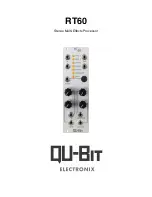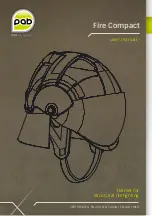
neoBLUE
®
mini System User Manual
P/N 051440D
1
1
Product Description
The neoBLUE mini LED Phototherapy System consists of two components – the neoBLUE
mini phototherapy light source and the adjustable arm with pole mount.
1.1 Intended Use
The neoBLUE mini LED Phototherapy System is intended for the treatment of neonatal
hyperbilirubinemia. The light can be used for infants in an open bed, incubator, bassinet, or
radiant warmer.
Important!
Before administering phototherapy with the neoBLUE mini light, read
all sections of this manual carefully. There are safety considerations that should be
read and understood before use.
1.2 Physical Characteristics
The neoBLUE mini device is a mobile phototherapy light that delivers a narrow band of
high-intensity blue light via light emitting diodes (LEDs) to provide treatment for neonatal
hyperbilirubinemia.
1.3 Light Source
The light is housed in a lightweight plastic enclosure. When used with the arm, the light
can be positioned in multiple positions and used with a variety of patient enclosures such as
open beds, incubators, bassinets, or radiant warmers.
The light output is optimized to provide a peak intensity of 30-35 µW/cm
2
/nm. Blue LEDs
emit light in the range of 400 – 550 nm (peak wavelength 450-470 nm). This range
corresponds to the spectral absorption of light by bilirubin, and is thus considered to be the
most effective for the degradation of bilirubin. Blue LEDs do not emit significant energy
in the ultraviolet (UV) or the infrared (IR) region of the spectrum, so there is no concern
about UV or IR exposure to or excessive warming of the infant. As with all phototherapy
lights, protective eyeshades must be used to protect the infant’s eyes from excessive light
exposure.
Warning! Eye Protection:
Do not look directly into the LEDs. During
treatment, always protect the baby’s eyes with eye patches or equivalent.
Periodically and/or per your hospital protocol, verify that the baby’s eyes are
protected and free of infection. Patients adjacent to the light may also need to be
protected with eye patches or equivalent.
LEDs have minimal light output degradation over their lifetime with proper use.
Nevertheless, the user can adjust the output of the LEDs using the potentiometer located on
the side of the light enclosure. The light is expected to operate as specified for at least
3,000 hours.


































